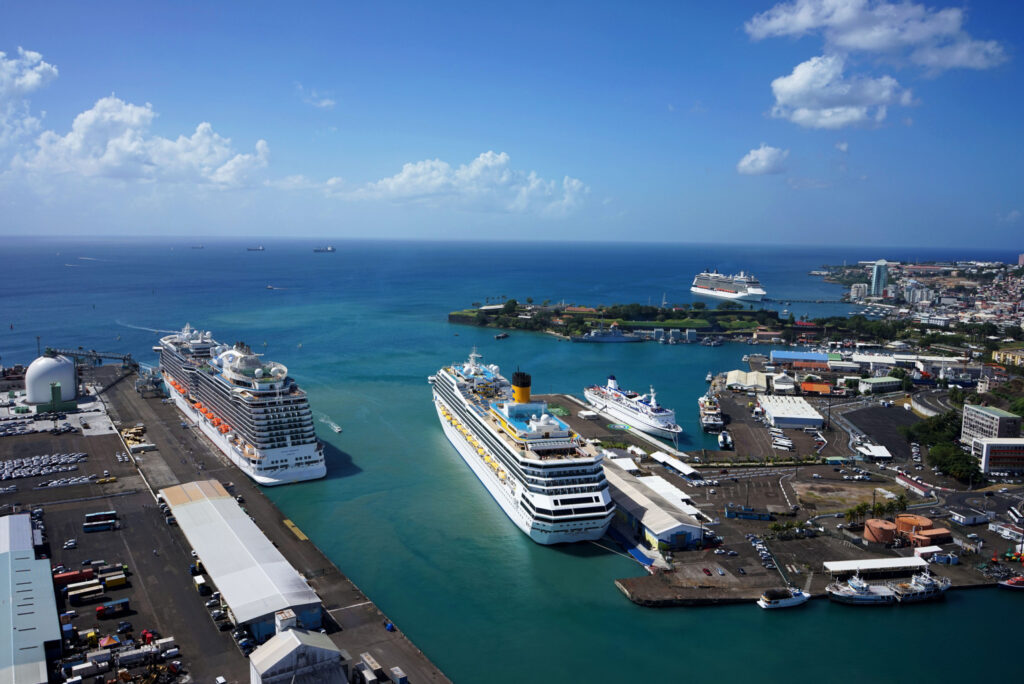In case of extreme events
By Ibrahim Ajagunna and Fritz Pinnock
2017, November 1: Cruising is, by far, the fastest growing sub-sector of the global tourism industry. However – unlike accommodation, food and beverage, entertainment, attractions – it is one of the few sub-sectors where there has been a concentration of power in the hands of a few.
The Caribbean for example has been the most popular cruise tourism destination since the demise of the transatlantic passenger industry. And today, the Caribbean remains the world’s leading destination for cruising. This is due largely to its proximity to the United States of America, the world’s largest source market for cruise passengers.
It is important to know that the cruise industry competes directly with land-based resort vacation products. Unlike land-based holiday products, which are demand-driven, cruise tourism is supply-driven.
From the cruise lines side of the business, the (ship construction) order book (through 2017) is showing a remarkable increase in the number of new builds of ocean-going vessels, with over 45,600 berths in anticipation. This is because:
- new destinations are emerging especially in the Mediterranean, Europe and Asia and in the Caribbean (to include Barbados, Jamaica and St. Vincent and the Grenadines);
- ports are expanding their facilities to accommodate more and bigger ships; while, at the same time,
- new ports are expected to be built so as to accommodate the additional business.
Important
Based on these facts, it is important to ask if Caribbean ports are ready to accommodate mega ships when extreme events, such as hurricanes, occur. A recent example of such extreme events is the devastation in St. Maarten by hurricane Irma. The answer to this would be partnership and cooperation between and amongst the countries of the Caribbean for immediate emergency response and mitigation and to work with cruise lines for modification of itineraries and to provide relief efforts.
An extreme event, such as a hurricane, is usually characterised by the following results and expectations:
- visitor-arrivals contract by some 30-40% immediately after the event;
- it takes up to four days for arrivals (in the case of land-based tourism) to return to normal levels; while, it may take longer for cruise ships, depending on the degree of damage to infrastructure;
- up to 3% of room stock will need repair; and,
- advertising expenditure will increase up to 3% above normal.
Jamaica
Extreme events have continued to produce widespread damage in the tourism sector. And, over the last 35 years, the intensity of hurricanes has been increasing. For example, in Jamaica, in 2004, Hurricane Ivan had an impact costing US$23.7m (excluding indirect impact). Hurricane Dean, in 2007, did damage of US$43.7m, of which US$30m was in the accommodation sub-sector.
The continuing rise in sea level is also cause for concern. Some 70% of Jamaica’s population reside in coastal areas. Likewise, most of major resort areas, including Negril, Montego Bay and Ocho Rios; and, much of the South coast, including Kingston, is in low-lying coastal areas. A storm surge or even a two-metre increase in the sea level would have a major impact on population, tourist resorts, infrastructure, i.e. roads, airports and port facilities; and, the possible loss of land in Kingston, Portland and Negril.
Climate change is having an impact on weather patterns, coral reefs and beaches all of which are critical to the tourism industry. Also, trends in weather pattern and extremes events suggest that the effects of climate change on tourism are negative. Changes in rainfall and temperature patterns can ultimately affect the attractiveness of a destination and cruise ports. Weather, like climate, has a significant effect on tourism choices.

Wisdom
There can be no denying the positive impacts of cruise travel for both passengers and those who provide destination services. Economically, the influx of ships and people inject a total of USD56.4 billions directly into Caribbean national economies, by way of wages and purchases. The dependency of many Caribbean countries on tourism has spurred massive development of ports so as to accommodate the mega-ships and the subsequent increase in visitor numbers. The question, however, is whether these ports were designed to withstand extreme events.
Drawing wisdom from the recent examples of hurricanes Irma and Maria, during which an entire country was wiped out and many others severely damaged, Caribbean countries need to be wary of the fact that extreme events will continue to have adverse effects on port facilities, infrastructure and superstructures- and, in turn, the cruise business.
Ships are getting bigger. There is continuous impact of scale. Focus has shifted. The cruise vessel is no longer a mode of transportation, taking people from home port to destination and back. The ship is now the destination, supported by ports of call. Inability by Caribbean countries to respond and meet the requirements of cruise vessels immediately after an extreme event would create a further shift of value and net earnings away from the Caribbean countries to the shipping lines.
Cruising offers both quality and quantity itineraries where a variety of marquee and new ports are presented. The more ports of call on the itinerary, the greater the demand. In addition, the facilities in a destination determine whether the ship can be docked alongside or be held at anchorage, with a tender to transfer passengers to land. This could have major cost implications in a case of extreme event. Usually, when a vessel is at anchorage, the crew is at work for the entire time the ship is in port, because of the need to simultaneously operate the tender, passenger safety and the on-going tasks of monitoring the ship. []







